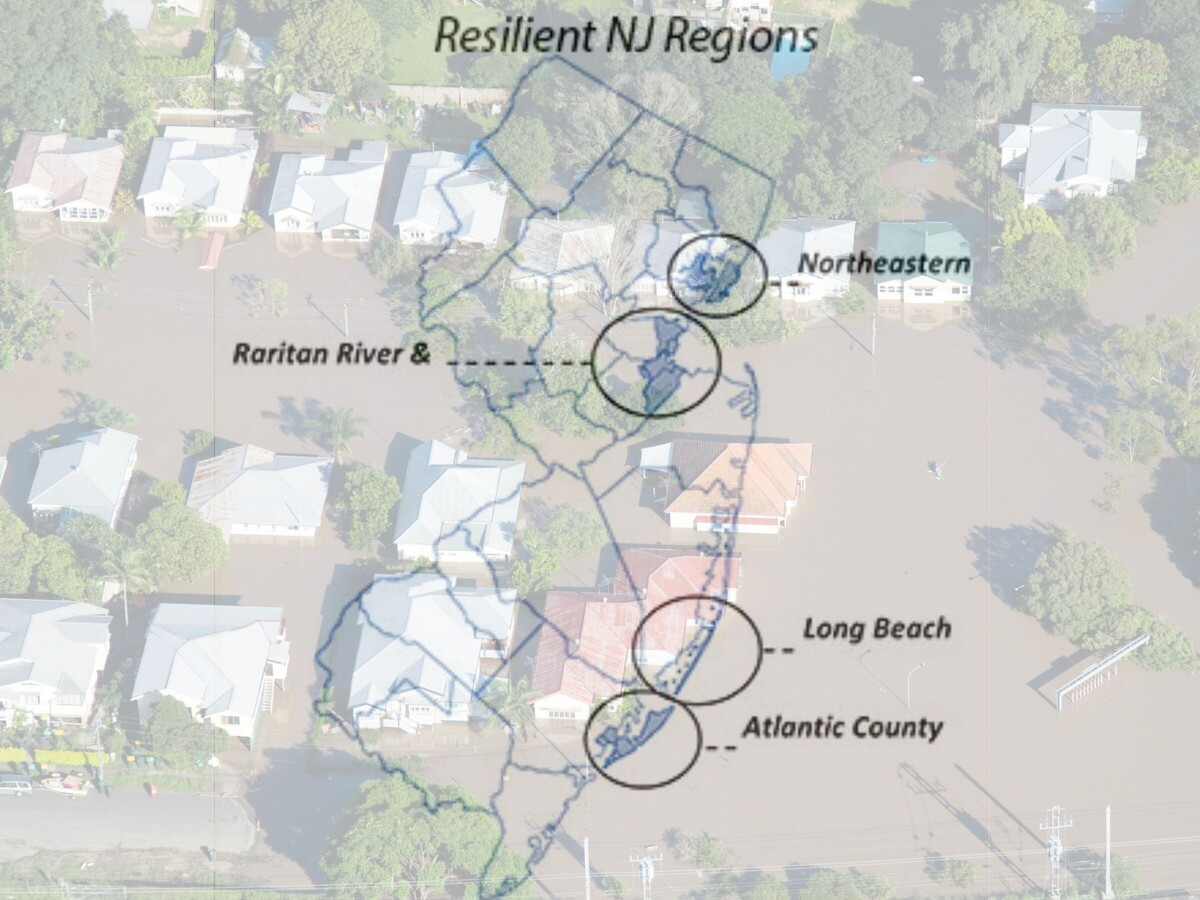Image


Four regional groups have released regional climate resilience action plans in advance of the 10th anniversary of Superstorm Sandy, the New Jersey Department of Environmental Protection’s (NJDEP) Office of Climate Resilience announced today.
“For too long, the public has thought of climate impacts as a problem happening somewhere else, to someone else, and at some time in the future,” said New Jersey Chief Climate Resilience Officer Nick Angarone. “But we know that the threats are happening here and now. The key to the success of the Resilient NJ effort is putting local decision-makers at the helm to ensure that these plans take root.”
The “Resilient NJ” plans are an outgrowth of a National Disaster Resilience Competition awarded to New Jersey to advance regional planning in areas most impacted by Sandy.
“Our communities are on the front lines of dealing with the impacts of climate change – and each one faces unique challenges,” said Environmental Protection Commissioner Shawn M. LaTourette. “These communities are to be commended for taking this critical step toward solutions that will help them become more resilient.”
The plans set forth resilience actions across 24 communities in four regions: Northeast, Raritan River and Bay Communities, Long Beach Island, and Atlantic County Coast.
Developed by community leaders and residents in consultation with teams of expert advisers provided by the DEP, the regional action plans prioritize actions and strategies, identify funding sources, set timelines, and identify opportunities to enhance regional and community resilience in the face of increasing threats from climate change and sea-level rise.
It is projected that a Sandy-like storm surge event occurring in 2070 could cause $45 billion in property damages in these four regions alone. By comparison, Sandy caused $30 billion in damages statewide.
“We know firsthand from the major impact of Hurricane Sandy and other weather-related incidents, that the best resiliency strategy is to have strong community connections. This community-driven action plan process reinforces those foundations and bolsters our ability to keep Newark moving forward.” –Newark Mayor Ras J. Baraka.
Regional Action Plan Details:
Northeast New Jersey Region (Jersey City, Newark, Bayonne, Hoboken, and Hudson County)
Raritan River and Bay Communities Region (Middlesex County, Carteret, Woodbridge, Old Bridge, Sayreville, South River, South Amboy, and Perth Amboy)
Long Beach Island Region (Long Beach Township, Beach Haven, Ship Bottom, Surf City, Harvey Cedars, and Barnegat Light)
Atlantic County Coastal Region (Ventnor, Margate, Longport, Atlantic City, Brigantine, Pleasantville, Northfield, and Atlantic County)
Resilient Action Plans Background:
The Resilient NJ: Regional Resilience Action Plan effort was funded by the National Disaster Resilience Competition. The U.S. Department of Housing and Urban Development (HUD) awarded New Jersey with a grant to advance regional planning initiatives in the nine counties designated Most Impacted and Distressed from Hurricane Sandy by HUD. Sandy devastated many parts of the state on Oct. 29, 2012.
The funding led to the four innovative regional planning projects focused on addressing gaps in resilience planning and partnering with underserved and socially vulnerable populations to enhance the value and integrity of the ecological, recreational, and economic resources in the regions through a collaborative, community-led planning process.
This effort brought together municipalities, local stakeholders, and community-based organizations to work with multi-disciplinary consultant teams comprised of planners, engineers, ecologists, designers, and other experts to address flood-related hazards at a regional scale in both riverine and coastal communities.
The Resilient NJ program has already paid dividends as three projects developed through the planning process were awarded more than $17 million from the FEMA Building Resilient Infrastructure and Communities (BRIC) program. The three projects awarded BRIC funding are the Ironbound resilience hub in Newark, the Cottage Street flood mitigation project in Bayonne, and the 63rd Street pumping station power and flood resilience project in Bayonne.
Morristown Minute has been approved for the 2022 Local News Fund!*
Our reporters will be dedicating time and resources to investigating the roadblocks to mental health accessibility in our town.
Donate to Morristown, NJs local mental health accessibility fund today!
 Scan or click to donate!
Scan or click to donate!*The 2022 Local News Fund is a program administered by the Local Media Foundation, a 501(c)(3) organization affiliated with the Local Media Association. The program’s purpose is to allow independent and family-owned news organizations to solicit tax-deductible donations from their communities for journalism projects focusing on critical local issues. Contributions to this program are tax-deductible to the full extent of U.S. law; please consult a tax advisor for details.